Deck 25: The Spine
Question
Question
Question
Question
Question
Question
Question
Question
Question
Question
Question
Question
Question
Question
Question
Question
Question
Question
Question
Question
Question
Question
Question
Question
Question
Question
Question
Question
Question
Question
Question
Question
Question
Question
Question
Question
Question
Question
Question
Question
Question
Question
Question
Question
Question

Unlock Deck
Sign up to unlock the cards in this deck!
Unlock Deck
Unlock Deck
1/45
Play
Full screen (f)
Deck 25: The Spine
1
Please check all of the special tests that can be performed to check for SI joint dysfunction in a patient.
A) Stork test
B) SI joint compression
C) Pelvic tilt
D) Iliotibial band stretch test
E) SI joint distraction
F) Bowstring test
G) Straight leg raising 30-60 degrees
H) FABER/Patrick test
I) Straight leg raising 70-90 degrees
A) Stork test
B) SI joint compression
C) Pelvic tilt
D) Iliotibial band stretch test
E) SI joint distraction
F) Bowstring test
G) Straight leg raising 30-60 degrees
H) FABER/Patrick test
I) Straight leg raising 70-90 degrees
SI joint compression
SI joint distraction
FABER/Patrick test
Straight leg raising 70-90 degrees
SI joint distraction
FABER/Patrick test
Straight leg raising 70-90 degrees
2
Please check all of the special tests demonstrated in the figures that can be performed to check for a herniated disc in a patient.
A)
B)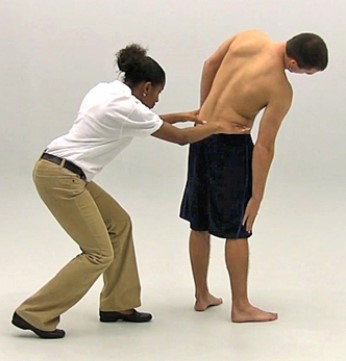
C)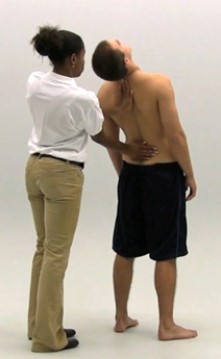
D)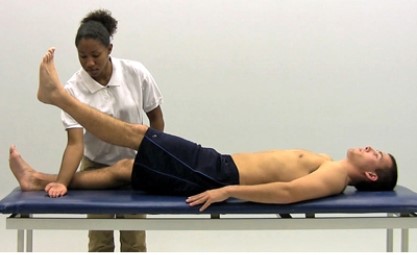
E)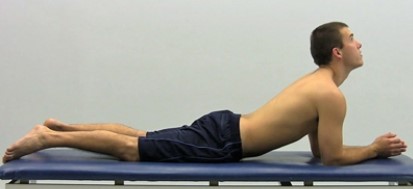 F)
F)  G)
G)

A)

B)

C)

D)

E)
 F)
F)  G)
G) 


 F)
F)  G)
G) 
3
Please check all of the muscles that are innervated by the ulnar nerve.
A) Flexor digiti minimi
B) Pronator teres
C) Flexor pollicis longus
D) Biceps brachii
E) Abductor digiti minimi
F) Coracobrachialis
A) Flexor digiti minimi
B) Pronator teres
C) Flexor pollicis longus
D) Biceps brachii
E) Abductor digiti minimi
F) Coracobrachialis
Pronator teres
Flexor pollicis longus
Biceps brachii
Coracobrachialis
Flexor pollicis longus
Biceps brachii
Coracobrachialis
4
Please check all of the following that can cause back anomalies.
A) Excessive length of the transverse process of the first lumbar vertebrae
B) Incomplete closure of the neural arch
C) Nonconformities of the transverse arch
D) Atypical lumbosacral angles
E) Complete closures of the vertebral laminae
A) Excessive length of the transverse process of the first lumbar vertebrae
B) Incomplete closure of the neural arch
C) Nonconformities of the transverse arch
D) Atypical lumbosacral angles
E) Complete closures of the vertebral laminae

Unlock Deck
Unlock for access to all 45 flashcards in this deck.
Unlock Deck
k this deck
5
Please check all of the muscles that are innervated by the femoral nerve.
A) Psoas major
B) Adductor brevis
C) Sartorius
D) Gracilis
E) Vastus lateralis
F) Biceps femoris
A) Psoas major
B) Adductor brevis
C) Sartorius
D) Gracilis
E) Vastus lateralis
F) Biceps femoris

Unlock Deck
Unlock for access to all 45 flashcards in this deck.
Unlock Deck
k this deck
6
Which of the following is an incorrect characteristic of the atlas vertebra?
A) It sits below the axis vertebra.
B) It has no body or spinous process.
C) Its lateral masses are connected to the anterior and posterior arches.
D) Its arches create a large enough opening to allow the medulla of the spinal cord to pass through.
E) Its upper surfaces articulate with the occipital condyles.
A) It sits below the axis vertebra.
B) It has no body or spinous process.
C) Its lateral masses are connected to the anterior and posterior arches.
D) Its arches create a large enough opening to allow the medulla of the spinal cord to pass through.
E) Its upper surfaces articulate with the occipital condyles.

Unlock Deck
Unlock for access to all 45 flashcards in this deck.
Unlock Deck
k this deck
7
What section of the spine is known as false vertebrae?
A) Ribs 9-12
B) Sacrum and coccyx
C) L1-L5
D) The atlas and axis
E) Scapulae
A) Ribs 9-12
B) Sacrum and coccyx
C) L1-L5
D) The atlas and axis
E) Scapulae

Unlock Deck
Unlock for access to all 45 flashcards in this deck.
Unlock Deck
k this deck
8
The sacroiliac is the junction formed by the sacrum and the:
A) ilium.
B) iliacus.
C) iliac.
D) intervertebral.
E) inferior.
A) ilium.
B) iliacus.
C) iliac.
D) intervertebral.
E) inferior.

Unlock Deck
Unlock for access to all 45 flashcards in this deck.
Unlock Deck
k this deck
9
What is the correct numerical order for the three different divisions of the movable vertebrae, respectively - cervical, thoracic, lumbar?
A) 2, 12, 4
B) 4, 10, 5
C) 6, 11, 6
D) 7, 12, 5
E) 8, 12, 4
A) 2, 12, 4
B) 4, 10, 5
C) 6, 11, 6
D) 7, 12, 5
E) 8, 12, 4

Unlock Deck
Unlock for access to all 45 flashcards in this deck.
Unlock Deck
k this deck
10
Which of the following structures, formed by the ilia meeting anteriorly, has an interarticular disk with a synovium and is lubricated by synovial fluid?
A) The iliopsoas
B) The annulus fibrosus
C) The coccyx
D) The pubis symphysis
E) The nucleus pulposus
A) The iliopsoas
B) The annulus fibrosus
C) The coccyx
D) The pubis symphysis
E) The nucleus pulposus

Unlock Deck
Unlock for access to all 45 flashcards in this deck.
Unlock Deck
k this deck
11
Which of the following statements is true of the movements of the lumbar region of the vertebral column?
A) It allows limited rotation.
B) It restricts flexion but allows ample rotation.
C) It hardly allows any extension.
D) It allows ample lateral flexion.
E) It allows ample rotation but restricts extension.
A) It allows limited rotation.
B) It restricts flexion but allows ample rotation.
C) It hardly allows any extension.
D) It allows ample lateral flexion.
E) It allows ample rotation but restricts extension.

Unlock Deck
Unlock for access to all 45 flashcards in this deck.
Unlock Deck
k this deck
12
A major ligament that joins the various vertebral structures is the ligament __________.
A) Coccygeal
B) Sacrospinous
C) Sacrotuberous
D) Interspinous
E) Plantaris
A) Coccygeal
B) Sacrospinous
C) Sacrotuberous
D) Interspinous
E) Plantaris

Unlock Deck
Unlock for access to all 45 flashcards in this deck.
Unlock Deck
k this deck
13
Which of the following structures contains the longissimus column of muscles?
A) The erector spinae
B) The semispinalis capitis
C) The splenius cervicis
D) The splenius capitus
E) The gluteus maximus
A) The erector spinae
B) The semispinalis capitis
C) The splenius cervicis
D) The splenius capitus
E) The gluteus maximus

Unlock Deck
Unlock for access to all 45 flashcards in this deck.
Unlock Deck
k this deck
14
What percentage value of flexion occurs at the lumbosacral junction (L5-S1)?
A) 5%
B) 10%
C) 15%
D) 20%
E) 75%
A) 5%
B) 10%
C) 15%
D) 20%
E) 75%

Unlock Deck
Unlock for access to all 45 flashcards in this deck.
Unlock Deck
k this deck
15
How many pairs of the spinal nerves extend from the sides of the spinal cord?
A) 24 pairs
B) 28 pairs
C) 29 pairs
D) 31 pairs
E) 33 pairs
A) 24 pairs
B) 28 pairs
C) 29 pairs
D) 31 pairs
E) 33 pairs

Unlock Deck
Unlock for access to all 45 flashcards in this deck.
Unlock Deck
k this deck
16
Which of the following statements about spinal nerves and the peripheral branches is incorrect?
A) The sacral plexus is comprised of L4 - S4.
B) A dermatome is the area of cutaneous sensory distribution.
C) A myotome is a muscle innvervated by a single specific spinal nerve.
D) The brachial plexus is comprised of C7 - T1.
E) A plexus is a network of nerves.
A) The sacral plexus is comprised of L4 - S4.
B) A dermatome is the area of cutaneous sensory distribution.
C) A myotome is a muscle innvervated by a single specific spinal nerve.
D) The brachial plexus is comprised of C7 - T1.
E) A plexus is a network of nerves.

Unlock Deck
Unlock for access to all 45 flashcards in this deck.
Unlock Deck
k this deck
17
In the history section of a spine assessment, what would be considered an inappropriate question to ask the patient?
A) Did you hit someone with, or land directly on, the top of your head?
B) How do you prefer to sit?
C) Do you have radicular parasthesia down the extremities?
D) Is there any pain in your buttocks or the back of the legs?
E) Do you have a low level of pain?
A) Did you hit someone with, or land directly on, the top of your head?
B) How do you prefer to sit?
C) Do you have radicular parasthesia down the extremities?
D) Is there any pain in your buttocks or the back of the legs?
E) Do you have a low level of pain?

Unlock Deck
Unlock for access to all 45 flashcards in this deck.
Unlock Deck
k this deck
18
In the observation section of the assessment of the spine, which of the following is considered an appropriate action to perform?
A) The entire body should be observed only from the lateral angle.
B) Special attention should be paid to the low back, pelvis, and hips.
C) Use of a posture screen should be avoided.
D) Special devices should be used even by trained observers with good background in postural observation.
E) All postural asymmetries should be considered.
A) The entire body should be observed only from the lateral angle.
B) Special attention should be paid to the low back, pelvis, and hips.
C) Use of a posture screen should be avoided.
D) Special devices should be used even by trained observers with good background in postural observation.
E) All postural asymmetries should be considered.

Unlock Deck
Unlock for access to all 45 flashcards in this deck.
Unlock Deck
k this deck
19
Which of the following would be an inappropriate body structure to palpate during the palpation section of the spine?
A) Space between the lumbar spinous processes
B) Facet joints
C) Abdominal musculature
D) Sacrum
E) Anterior superior iliac spines
A) Space between the lumbar spinous processes
B) Facet joints
C) Abdominal musculature
D) Sacrum
E) Anterior superior iliac spines

Unlock Deck
Unlock for access to all 45 flashcards in this deck.
Unlock Deck
k this deck
20
Bakody's sign is associated with:
A) Spurling's test.
B) Gaenslen's test.
C) the Patrick test.
D) the shoulder abduction test.
E) the bowstring test.
A) Spurling's test.
B) Gaenslen's test.
C) the Patrick test.
D) the shoulder abduction test.
E) the bowstring test.

Unlock Deck
Unlock for access to all 45 flashcards in this deck.
Unlock Deck
k this deck
21
In the following image, what are the anatomical malalignments of the spine and other involved structures? 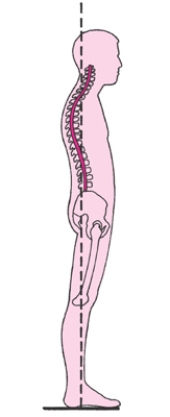
A) Kyphotic position that causes compensatory position of the head and neck
B) An abnormal curvature in one direction and a compensatory secondary curve in the opposite direction
C) Increase in both the anterior tilt of the pelvis and in hip flexion
D) Posterior shift of the thoracic segment and anterior shifting of the entire pelvis
E) Increased thoracic curve and protracted scapulae producing a rounded shoulder appearance

A) Kyphotic position that causes compensatory position of the head and neck
B) An abnormal curvature in one direction and a compensatory secondary curve in the opposite direction
C) Increase in both the anterior tilt of the pelvis and in hip flexion
D) Posterior shift of the thoracic segment and anterior shifting of the entire pelvis
E) Increased thoracic curve and protracted scapulae producing a rounded shoulder appearance

Unlock Deck
Unlock for access to all 45 flashcards in this deck.
Unlock Deck
k this deck
22
In an occupational educational program for the prevention of spine injuries, what would be one of the most important factors to address?
A) Proper body mechanics
B) Maintenance of a strength program
C) Daily stretching
D) Regulation of health diet
E) Minimizing stressor
A) Proper body mechanics
B) Maintenance of a strength program
C) Daily stretching
D) Regulation of health diet
E) Minimizing stressor

Unlock Deck
Unlock for access to all 45 flashcards in this deck.
Unlock Deck
k this deck
23
In the context of cervical disk injuries, which of the following actions is most likely to facilitate a stable, safe, and pain-free cervical posture during strenuous activity?
A) Asking the patient to perform isotonic exercises
B) Administering cryotherapy
C) Asking the patient to perform range of motion (ROM) exercises
D) Asking the patient to perform isometric exercises
E) Instructing the patient on the importance of maintaining a neutral spine
A) Asking the patient to perform isotonic exercises
B) Administering cryotherapy
C) Asking the patient to perform range of motion (ROM) exercises
D) Asking the patient to perform isometric exercises
E) Instructing the patient on the importance of maintaining a neutral spine

Unlock Deck
Unlock for access to all 45 flashcards in this deck.
Unlock Deck
k this deck
24
What would differentiate a cervical dislocation from a cervical fracture?
A) A cervical fracture would have a significant amount of pain, while the cervical dislocation would not.
B) A cervical dislocation would have a significant amount of pain, while the cervical fracture would not.
C) A cervical dislocation would involve the neck to be tilted toward the dislocated side with extreme muscle tightness, while the cervical fracture would not.
D) A cervical fracture would involve the neck to be tilted toward the dislocated side with extreme muscle tightness, while the cervical dislocation would not.
E) Numbness would occur in a cervical fracture, whereas it would not occur in a cervical dislocation.
A) A cervical fracture would have a significant amount of pain, while the cervical dislocation would not.
B) A cervical dislocation would have a significant amount of pain, while the cervical fracture would not.
C) A cervical dislocation would involve the neck to be tilted toward the dislocated side with extreme muscle tightness, while the cervical fracture would not.
D) A cervical fracture would involve the neck to be tilted toward the dislocated side with extreme muscle tightness, while the cervical dislocation would not.
E) Numbness would occur in a cervical fracture, whereas it would not occur in a cervical dislocation.

Unlock Deck
Unlock for access to all 45 flashcards in this deck.
Unlock Deck
k this deck
25
A football player complains of tenderness to the transverse and spinous processes of the neck that appeared the day following a game. What could be wrong with this player?
A) Cervical dislocation
B) Cervical sprain
C) Acute torticollis
D) Nerve root injury
E) Cervical spine stenosis
A) Cervical dislocation
B) Cervical sprain
C) Acute torticollis
D) Nerve root injury
E) Cervical spine stenosis

Unlock Deck
Unlock for access to all 45 flashcards in this deck.
Unlock Deck
k this deck
26
Which of the following is caused by an injury to one side of the spinal cord that results in loss of motor function, touch, vibration, and position sense on one side of the body?
A) Central cord lesion
B) Anterior cord lesion
C) Posterior cord lesion
D) Brown-sequard lesion
E) Central cord syndrome
A) Central cord lesion
B) Anterior cord lesion
C) Posterior cord lesion
D) Brown-sequard lesion
E) Central cord syndrome

Unlock Deck
Unlock for access to all 45 flashcards in this deck.
Unlock Deck
k this deck
27
Which of the following is caused by hemorrhage or ischemia in the central portion of the cord and results in complete quadriplegia with nonspecific sensory loss in sexual as well as bowel-bladder dysfunction?
A) Central cord lesion
B) Anterior cord lesion
C) Posterior cord lesion
D) Brown-sequard lesion
E) Central cord syndrome
A) Central cord lesion
B) Anterior cord lesion
C) Posterior cord lesion
D) Brown-sequard lesion
E) Central cord syndrome

Unlock Deck
Unlock for access to all 45 flashcards in this deck.
Unlock Deck
k this deck
28
Brachial plexus neuropraxia occurs when the neck is:
A) forced laterally to the opposite side while the shoulder is depressed.
B) flexed while the shoulder is depressed.
C) extended while the shoulder is depressed.
D) forced laterally to the opposite side while the shoulder is elevated.
E) flexed while the shoulder is elevated.
A) forced laterally to the opposite side while the shoulder is depressed.
B) flexed while the shoulder is depressed.
C) extended while the shoulder is depressed.
D) forced laterally to the opposite side while the shoulder is elevated.
E) flexed while the shoulder is elevated.

Unlock Deck
Unlock for access to all 45 flashcards in this deck.
Unlock Deck
k this deck
29
If at the end of a physically active day a young patient complains of a backache and tight hamstrings and he has a noticeable kyphosis of the thorasic spine and lumbar lordosis, which of following identifies the condition?
A) Low back muscle strain
B) Lumbar vertebrae fracture
C) Lumbar vertebrae dislocation
D) Scheuermann's disease
E) Lumbar contusion
A) Low back muscle strain
B) Lumbar vertebrae fracture
C) Lumbar vertebrae dislocation
D) Scheuermann's disease
E) Lumbar contusion

Unlock Deck
Unlock for access to all 45 flashcards in this deck.
Unlock Deck
k this deck
30
Hyperflexion of the trunk or falling from a height and landing on the feet or buttocks could cause which of the following?
A) Hairline fracture
B) Compression fracture
C) Lower lumbar dislocation
D) Fracture of the transverse process
E) Fracture of the spinous process
A) Hairline fracture
B) Compression fracture
C) Lower lumbar dislocation
D) Fracture of the transverse process
E) Fracture of the spinous process

Unlock Deck
Unlock for access to all 45 flashcards in this deck.
Unlock Deck
k this deck
31
Pain in the low back that is created in active extension and passive flexion is indicative of which of the following?
A) Myofascial pain syndrome
B) Back contusion
C) Sciatica
D) Low back muscle strain
E) Lumbar vertebrae dislocation
A) Myofascial pain syndrome
B) Back contusion
C) Sciatica
D) Low back muscle strain
E) Lumbar vertebrae dislocation

Unlock Deck
Unlock for access to all 45 flashcards in this deck.
Unlock Deck
k this deck
32
When addressing myofascial pain syndrome, the piriformis is an important muscle to address because of its close proximity to what nerve?
A) Sciatic nerve
B) Femoral nerve
C) Tibial nerve
D) Superficial peroneal nerve
E) Deep peroneal nerve
A) Sciatic nerve
B) Femoral nerve
C) Tibial nerve
D) Superficial peroneal nerve
E) Deep peroneal nerve

Unlock Deck
Unlock for access to all 45 flashcards in this deck.
Unlock Deck
k this deck
33
Spondylolisthesis most likely occurs at what vertebral segment?
A) L2-L3
B) L3-L4
C) L4-L5
D) L5-S1
E) S1-S2
A) L2-L3
B) L3-L4
C) L4-L5
D) L5-S1
E) S1-S2

Unlock Deck
Unlock for access to all 45 flashcards in this deck.
Unlock Deck
k this deck
34
Spondylolisthesis is considered to be a complication of which of the following?
A) Herniated disc
B) Spondylolysis
C) Sacroiliac joint dysfunction
D) Lumbosacral strain
E) Coccyx injury
A) Herniated disc
B) Spondylolysis
C) Sacroiliac joint dysfunction
D) Lumbosacral strain
E) Coccyx injury

Unlock Deck
Unlock for access to all 45 flashcards in this deck.
Unlock Deck
k this deck
35
If a person has pain that increases after activity and is hesitant to perform forward bending, what could be wrong?
A) Spondylolysis
B) Spondylolisthesis
C) Herniated disc
D) Either spondylolysis or spondylolisthesis
E) Spondylolysis, spondylolisthesis, or a herniated disc
A) Spondylolysis
B) Spondylolisthesis
C) Herniated disc
D) Either spondylolysis or spondylolisthesis
E) Spondylolysis, spondylolisthesis, or a herniated disc

Unlock Deck
Unlock for access to all 45 flashcards in this deck.
Unlock Deck
k this deck
36
A track athlete suffers from pain running up and down hills and notices that the pain radiates into the anterior thigh. Based on the signs and symptoms, he is most likely suffering from?
A) Sacroiliac sprain
B) Coccyx injury
C) Herniated disc
D) Spondylolysis
E) Spondylolisthesis
A) Sacroiliac sprain
B) Coccyx injury
C) Herniated disc
D) Spondylolysis
E) Spondylolisthesis

Unlock Deck
Unlock for access to all 45 flashcards in this deck.
Unlock Deck
k this deck
37
Which of the following statements is true of back pain?
A) Adolescents have a 70%-80% incidence of back pain before the age of 20 years.
B) People aged between 20 and 30 years are more prone to developing chronic low back pain than others.
C) Males are more likely to suffer from low back pain than females.
D) Recurrent low back pain is caused exclusively by nerve root compression.
E) Recurrent low back pain is rare, following an episode of low back pain.
A) Adolescents have a 70%-80% incidence of back pain before the age of 20 years.
B) People aged between 20 and 30 years are more prone to developing chronic low back pain than others.
C) Males are more likely to suffer from low back pain than females.
D) Recurrent low back pain is caused exclusively by nerve root compression.
E) Recurrent low back pain is rare, following an episode of low back pain.

Unlock Deck
Unlock for access to all 45 flashcards in this deck.
Unlock Deck
k this deck
38
An athlete who has previously suffered from brachial plexus neuropraxia and wishes to return to full activity must definitely have a negative
A) Spurling's test.
B) Patrick test.
C) Gillet test.
D) Slump test.
E) Bowstring test.
A) Spurling's test.
B) Patrick test.
C) Gillet test.
D) Slump test.
E) Bowstring test.

Unlock Deck
Unlock for access to all 45 flashcards in this deck.
Unlock Deck
k this deck
39
In the context of the treatment for a small protrusion of the nucleus pulposus, how often is traction usually applied to a patient?
A) Once a day for a week
B) Twice a day for a week
C) Daily, five times per week, for two weeks
D) Twice a day for two weeks
E) Three times a day until pain is relieved
A) Once a day for a week
B) Twice a day for a week
C) Daily, five times per week, for two weeks
D) Twice a day for two weeks
E) Three times a day until pain is relieved

Unlock Deck
Unlock for access to all 45 flashcards in this deck.
Unlock Deck
k this deck
40
Which of the following factors should be considered in a rehabilitation program for patients suffering from low back pain?
A) Their workplace environment
B) Their eating habits
C) Any previous thoracic injury that they may have sustained
D) Any previous cervical injury that they may have sustained
E) Any previous sacral injury that they may have sustained
A) Their workplace environment
B) Their eating habits
C) Any previous thoracic injury that they may have sustained
D) Any previous cervical injury that they may have sustained
E) Any previous sacral injury that they may have sustained

Unlock Deck
Unlock for access to all 45 flashcards in this deck.
Unlock Deck
k this deck
41
An abdominal brace or "drawing in" maneuver similar to a posterior tilt of the pelvis, which flattens the lumbar curve, is caused by a simultaneous co-contraction of the transversus abdominus and muscles.
A) Longissimus
B) Spinalis
C) Cervicis
D) Multifidus
E) Iliocostalis
A) Longissimus
B) Spinalis
C) Cervicis
D) Multifidus
E) Iliocostalis

Unlock Deck
Unlock for access to all 45 flashcards in this deck.
Unlock Deck
k this deck
42
In the observation section of a spine assessment, what would be considered an inappropriate action to perform?
A) Does the patient have PEARL pupils?
B) Is the patient willing to move the head and neck freely?
C) Does the midline of the posterior spine create a symmetrical division?
D) Is one shoulder lower than the other?
E) Patient's head carry?
A) Does the patient have PEARL pupils?
B) Is the patient willing to move the head and neck freely?
C) Does the midline of the posterior spine create a symmetrical division?
D) Is one shoulder lower than the other?
E) Patient's head carry?

Unlock Deck
Unlock for access to all 45 flashcards in this deck.
Unlock Deck
k this deck
43
What should be ruled out before performing any special tests of the cervical spine?
A) Prior injury to the injured body part
B) Prior injury to a related body part
C) Direct trauma to either the vertebrae or spinal cord
D) Radicular pain into the distal extremities
E) Missing dermatomal sensations
A) Prior injury to the injured body part
B) Prior injury to a related body part
C) Direct trauma to either the vertebrae or spinal cord
D) Radicular pain into the distal extremities
E) Missing dermatomal sensations

Unlock Deck
Unlock for access to all 45 flashcards in this deck.
Unlock Deck
k this deck
44
At what level of the vertebral column is a cervical fracture most likely to occur?
A) C6
B) C4
C) C5
D) C4 or C5
E) C4, C5, or C6
A) C6
B) C4
C) C5
D) C4 or C5
E) C4, C5, or C6

Unlock Deck
Unlock for access to all 45 flashcards in this deck.
Unlock Deck
k this deck
45
The FADDIR test is utilized to check for what problem?
A) SI joint irritation
B) Lumbar strain
C) SI joint dysfunction
D) Nerve root irritation
E) Piriformis injury
A) SI joint irritation
B) Lumbar strain
C) SI joint dysfunction
D) Nerve root irritation
E) Piriformis injury

Unlock Deck
Unlock for access to all 45 flashcards in this deck.
Unlock Deck
k this deck



